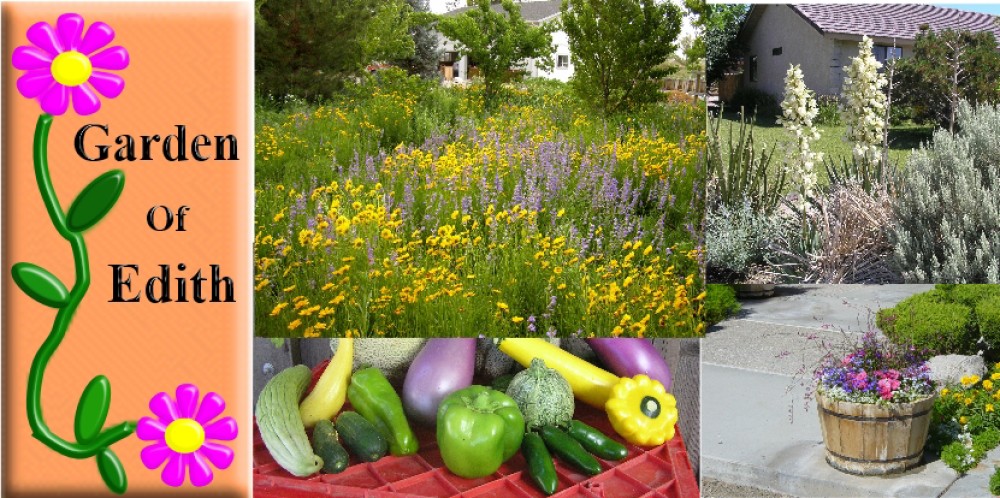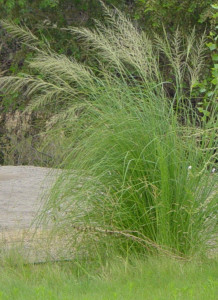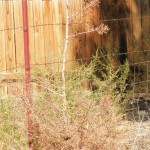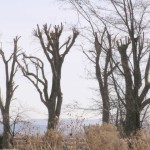My garden has many ornamental grasses that I’ve planted over the years. Most of these grasses are species native to the western United States. They have done quite well in my garden and added interest in the heat of the summer when many flowers that bloom don’t last long in the hot dry heat typical of the desert I live in. One of my favorites is Giant Sacaton (Sporobolus wrightii).
Giant Sacaton is native to the American Southwest. It is usually found growing in heavy
soils in the relatively low lying areas or periodic wetlands. These soils are usually quite alkaline or saline because they are areas where water collects and evaporative leaving behind salts. Because my garden is a mixture of clay and sand with a pH of about 8.0 and high in salts left behind by the now dried up inland sea, Giant Sacaton does quite well in my garden. It is my substitute for Pampas Grass. In some regions of the United States, Pampas Grass is a noxious weed.
Just like Pampas Grass, Giant Sacaton gets quite tall and large over a growing season. Its growth habit is that of a clumping grass that can grow to a height of 6′-8′ and a diameter of several feet at its base. The inflorescence differs from Pampas Grass in that it is more open and the florets are much smaller.
I use my Giant Sacaton as a screen from a major highway that borders my property. I’m quite pleased with its appearance. I think I will keep it.
Maintenance
Ornamental grasses require very little maintenance since you don’t want to mow or you
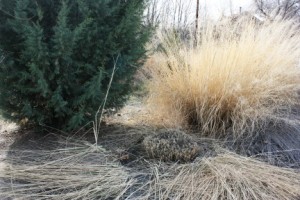
I’m starting to clip my ornamental grasses. Here I’ve clipped one of my Giant Sacatons (Sporobolus wrightii)
lose the most ornamental part of the grass which is the inflorescence. If you plant the grasses that are adapted or native to your climate, then very little water should be required to keep them nice looking.
Still, each late winter or early spring I must clip my ornamental grasses back so that new growth can be fully displayed and to extend the life of my grasses. I clip Giant Sacaton back to about 6″ to 8″ height. I clip my other grasses back to a height of 2″-3″ depending on the mature size of each species.
I don’t clip my grasses until late winter or early spring since they have an ornamental value through the winter and some beneficial insects such as lady beetles over winter among the blades.
When I clip my grasses, I’ve started just laying the clippings around the base to help hold moisture in the soil and keep weeds down. I’m also hoping to build up some organic matter in my soil has very little organic matter naturally.
